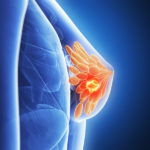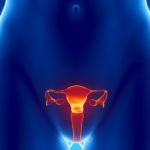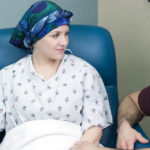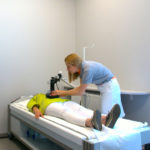 Wróć do poprzedniej strony
Wróć do poprzedniej strony
Multiple sclerosis – symptoms, causes and treatment

Multiple sclerosis is a steadily progressive nervous system disease that can lead to disability. Inflammation, demyelination, and axonal degeneration are the main mechanisms causing the symptoms of multiple sclerosis. However, the exact cause of the disease is not known. It is assumed to be an autoimmune disorder with a multifactorial origin. Applied symptomatic treatment and treatment that affects the natural course of the disease can slow the progression and reduce the discomfort.
What is multiple sclerosis
Multiple sclerosis (sclerosis multiplex, MS) is a chronic inflammatory-demyelinating disease of the nervous system.
Approximately 30 people per 100,000 suffer from MS. Characteristics of MS are diffuse lesions of the central nervous system, i.e., the brain and spinal cord.
The main essence of the lesions is damage to the myelin sheaths of nerve fibers which derives the term demyelination. At the sites of myelin destruction, „hardened scars” are formed.
Generalizing, the absence or significant damage to nerve fiber sheaths causes abnormal or impaired conduction of nerve impulses. The occurrence and type of symptoms depend on which part of the central nervous system the myelin sheaths have been compromised.
Multiple sclerosis symptoms
The onset of multiple sclerosis is usually characterized by the appearance of one nervous system symptom, rarely two or more. Most often, the first symptom is seldom mentioned, extraocular optic neuritis.
The most common symptom is sensory abnormalities and sensory sensations in the extremities. Surface sensory disturbances consist of altered touch, temperature, or pain sensations.
Often patients complain of tingling, numbness, stinging or a sensation resembling electric shock.
Symptoms of extraocular optic neuritis are associated with decreased vision and often the characteristic so-called central glare.
If there are such symptoms as dizziness or double vision, then they also indicate symptoms of damage to other parts of the nervous system.
Symptoms of extraocular optic neuritis can build up over several days, occur suddenly, and recur after some time. It is crucial to recognize these symptoms and to see a doctor as soon as possible.
Other uncharacteristic emerging complaints are:
- fatigue,
- sleep disturbances,
- weakness of strength,
- heaviness and pain in the legs
- muscle cramps and stiffness.
Such symptoms can occur in many diseases and require medical evaluation. Some patients also report problems with coordination of movement as their first symptom.
Later symptoms
As MS progresses, the patient may develop paresis in one or both legs or legs and arms. Equally common during a flare-up, patients complain of surface sensory disturbances, impaired fluidity of movement, and intentional limb tremor, a tremor that occurs
during deliberate movement of the arm or leg.
Nystagmus and abnormal eye movement are also common symptoms, as are balance problems and dizziness.
One symptom of multiple sclerosis that occurs late in life is the inability to control the sphincters. As a result of this disorder, the MS patient has an urgent need to urinate or defecate and other resulting conditions.
In the early stages of the disease, cognitive problems are rare. Memory and mental disorders affect about 5 percent of patients. Patients have difficulty processing and analyzing information and struggle with memory and attention problems.
Often MS patients also suffer from depression, especially after a prolonged period of illness. In addition, some suffer from sexual dysfunction.
Depending on which nerve has been affected, the patient may report several other complaints, such as trembling hands and objects falling out of the hands, problems with writing, hearing disorders, speech disorders, seizures, or epileptic seizures.
Causes of multiple sclerosis
The causes of multiple sclerosis are not yet well understood. It is assumed that the underlying cause of the disease is complex and that genetic, immunopathological, and environmental factors contribute to its development.
Since it is an autoimmune disease, the immune system attacks its cells, in this case, nervous system cells.
Various studies have identified several factors that may increase the risk of developing MS. These include:
- female gender,
- white race,
- age between 20 and 40,
- Epstein-Barr virus infection that causes mononucleosis,
- type I diabetes,
- inflammatory bowel disease,
- thyroid disease,
- smoking,
- vitamin D deficiency,
- obesity in adolescence.
Treatment of multiple sclerosis
A cure for multiple sclerosis with the current medical knowledge is impossible. It is a chronic disease that accompanies the patient throughout life.
Since it is not known what causes multiple sclerosis, there is no causal treatment. Current therapies focus on symptomatic treatment and administering immunomodulatory or disease-modifying drugs.
Prescribing corticosteroids (prednisone or methylprednisolone) is currently the most effective treatment and reduces the duration of neurological symptoms during a relapse.
Symptomatic treatment, appropriate to the symptoms, is designed to reduce the severity of other comorbid and unpleasant discomforts and conditions, such as urinary or fecal incontinence, depression, muscle stiffness, headaches, and other painful complaints.
Many medications help relieve the patient of the problems; as mentioned earlier, the doctor tailors the therapy to the patient’s condition.
Slowing the progression of multiple sclerosis, lowering the frequency of flare-ups, and preventing and delaying the onset of disability are the goals of disease-modifying treatment.
In Poland, drugs such as interferon beta 1a, interferon beta 1b, and glatiramer acetate are used. Once the criteria for inclusion in the MS treatment program are met, these drugs are reimbursed by the National Health Fund, even for several years.
In exceptional situations, treatment with natalizumab or fingolimod is allowed.
In severe cases of the relapsing-remitting form, immunosuppressive treatment with mitoxantrone is also used.
Due to many symptoms that make it difficult to move, MS patients are most often recommended to undergo physical rehabilitation.
Conducting it has an invaluable impact on physical and psychological well-being and helps patients improve. Exercises help stretch contracted and tired muscles, improve balance and coordination, and strengthen the body.
While it is true that diet has not been shown to help treat multiple sclerosis directly, a proper diet can help alleviate some of the symptoms of the disease, as well as strengthen the body and give it the strength to fight back.
How multiple sclerosis progresses
Numerous symptoms characterize multiple sclerosis, and its course can take different forms, with the most common being alternating periods of remission (periods without symptoms) and exacerbations.
The speed of the disease’s progression is individual. The illness of multiple sclerosis progresses in various forms, the most common of which are:
- Relapsing-remitting (dart-remitting) – about 85-90 percent of all MS cases start with this form. It is characterized by so-called „throws” of neurological symptoms, i.e., the appearance of new disease symptoms or an exacerbation of those previously present. One flare usually lasts from a few days to a few weeks. Over time, symptoms may partially or entirely resolve. The number of throws per year is highly individual and looks different for each patient with the most common form of MS.
- Secondary progressive – it is preceded by the relapsing-remitting form. At this stage of the disease, the incidence and severity of symptoms progress steadily. Typically, remission is not observed after episodes. It is estimated that 30-40 percent of patients move to this phase of the disease 10-15 years after diagnosis.
- Primary progressive: neurological symptoms progress steadily in this form, contributing to an increasing degree of disability in patients. Patients with this form account for about 10 percent of all cases.
Who can get multiple sclerosis
Anyone can contract multiple sclerosis, but there is a noticeable tendency for incidence between the ages of 15-45, where the average age of onset is 20-40 in the projection-remission form and 39-41 in the primary progressive form.
MS affects women more often than men, but the disease sometimes progresses faster in the male group. In Poland, 6-7 out of 10 patients are women.
The vast majority of cases occur among Caucasians living in the northern hemisphere. The closer to the equator, the lower the incidence.
It is estimated that more than 2.5 million people worldwide bear multiple sclerosis. The number of patients in Europe has been estimated at more than a million, and in Poland at more than 50,000.
The Polish Multiple Sclerosis Society predicts that there are 1,300-2,100 new cases in Poland each year.
IIt is also known that people with the first degree of kinship with the patients have a 20-40 times higher risk of developing multiple sclerosis.
How to diagnose multiple sclerosis
At the outset, a doctor who suspects multiple sclerosis takes a thorough history regarding the symptoms that concern him, their nature, and duration. He also asks about comorbidities and similar symptoms among family members.
In addition to the history, neurological examinations and consultations with a neurologist are necessary to diagnose MS. If the doctor deems it appropriate, he may refer the patient for other tests.
In the diagnosis of MS, magnetic resonance imaging (MRI) is the most common test. Its performance provides reliable and accurate information sufficient to make a diagnosis or rule it out.
An MRI scan can show demyelinating lesions, which is an element of MS. It also provides additional data on the activity of the disease. It gives a chance to assess its further progression.
MRI examination is performed to assess the effectiveness of ongoing therapy. However, this depends on many different factors.
In addition, the MRI examination is an invaluable method for ruling out diseases with symptoms and complaints similar to those of multiple sclerosis.
Another test ordered when diagnosing multiple sclerosis is to perform a lumbar puncture and collect cerebrospinal fluid (PMR).
The PMR is examined for oligoclonal bands and IgG antibodies, and a general fluid examination is performed. This test is essential because it helps rule out other diseases that give symptoms, such as MS.
Sometimes the doctor orders a study of visually evoked potentials. It evaluates conduction in the nerve pathways by observing brain activity and responses to stimuli.
Since many other diseases have a course and symptoms similar to MS, a differential diagnosis should be made and conditions such as:
- Lyme disease,
- neuroborreliosis,
- Sjörgen syndrome,
- lupus,
- Devic’s disease,
- acute disseminated encephalomyelitis,
- acute hemorrhagic inflammation of the white matter of the brain,
- cerebrovascular diseases,
- meningovascular syphilis,
- neurosarcoidosis,
- Behcet’s disease.
Sometimes, excluding other diseases is very simple, and specialized tests are necessary.
Contact information
55-010 Żerniki Wrocławskie
Working hours
Have a question?
Use the quick contact form!
Contact information
55-010 Żerniki Wrocławskie




